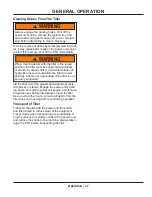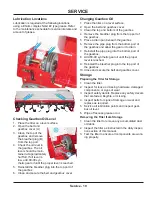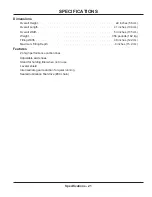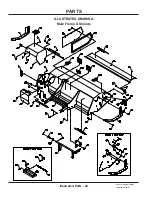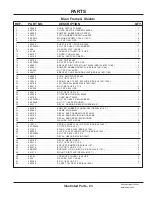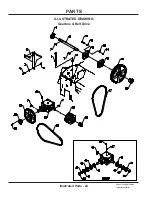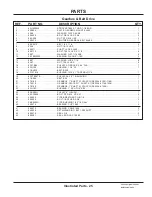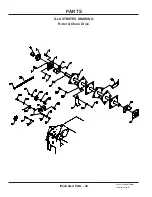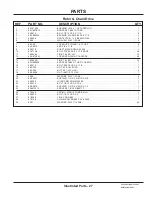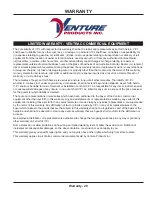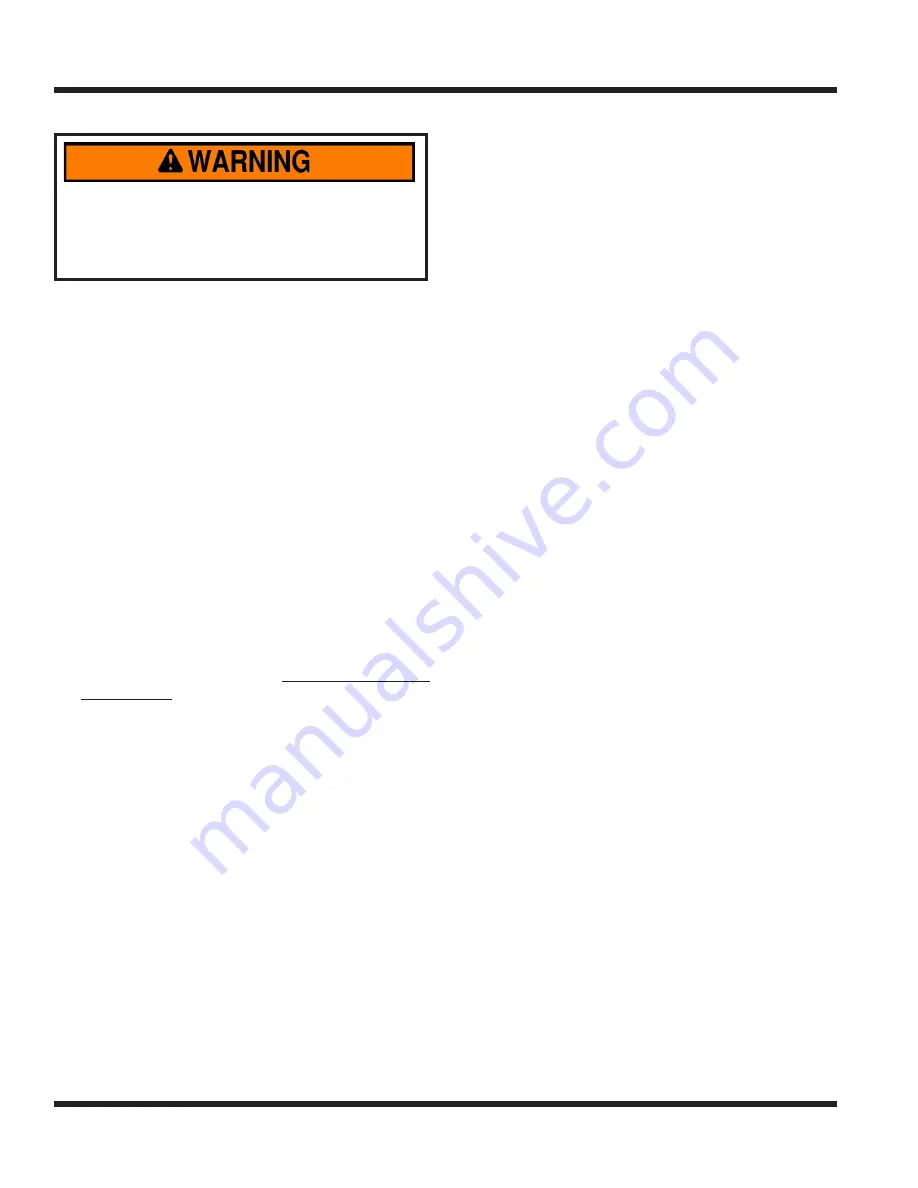
Operation - 16
GENERAL OPERATION
Daily Inspection
1.
Always set the parking brake, shut off power
unit engine, remove the ignition key, and ensure
all moving parts have come to a complete stop
before inspecting components, or attempting
any repair or adjustment.
Park machine on a level surface, with the engine
shut off and all fluids cold.
2. Perform a visual inspection of both the power
unit and the tiller. Look for loose or missing hard-
ware, damaged components, or signs of wear.
3. Inspect the drive belts and tiller tines. Belts should
be in good condition. Replace worn belts and bent
or damaged tiller tines .
4. Refer to the power unit operator’s manual.
Check the power unit’s engine oil, hydraulic oil,
cooling system, tire pressure, and fuel level. Add
fluid or service as required.
5. Test the power unit’s operator safety interlock
system*.
Attaching
1. Drive the power unit slowly forward into the hitch
arms of the tiller. Align the lift arms of the power
unit with the tiller hitch arms by raising or lower-
ing the front hitch and complete the engagement.
2. Once completely engaged, close the front hitch
locking lever.*
3.
Engage the parking brake* and shut off the engine.
4. Place the attachment belt onto the PTO drive
pulley on the power unit. Ensure the belt is prop-
erly seated in each pulley.
5. Engage the PTO belt tensioner.
6. Raise the tiller slightly rotate the jack stand up
to the operating position.
Detaching
1. Park the power unit on a level surface and set
the parking brake.*
2. Rotate the jack stand down to the storage position.
3. Lower the tiller to the ground.
4.
Shut off power unit engine.
5. Disengage the PTO belt tensioner.
6. Remove the attachment belt from the PTO drive
pulley of the power unit and hook onto the bolt
provided for belt storage.
7. Disengage the front hitch locking lever*.
8. Restart the power unit and back slowly away
from the tiller.
Operating Procedure
Before operation, perform daily inspection, shift the
power unit into
low range
, and verify the tiller skid
shoes are set for the desired depth.
Mark out the work area to be tilled. For best results,
start tilling on the right side of the work area and
work to the left.
The tiller is designed to be used with the power unit
traveling in reverse. Drive the power unit into the
work area and position the tiller at the edge of the
area to be tilled. With the power unit’s engine run-
ning between 2,000 and 2,500 RPM, engage the
PTO switch. Adjust the throttle to the desired engine
RPM. Slowly lower the tiller into the ground and
begin to move the power unit in reverse. Continue
lowering the tiller until the skid shoes contact the
ground. Place the power unit’s primary SDLA lever
in the float position by pushing it to the right until the
detent engages. The lever will stay in this position
until intentionally removed.
Continue moving in reverse at an appropriate speed
for the soil conditions. If the tiller belts begin to slip,
reduce ground speed or raise the depth of the tiller.
When near the desired end of the row, slowly begin
lifting the tiller out of the ground while the power unit
is still moving. This will minimize the ditch created at
the end of the row.
Disengage the PTO, move the power unit to the left
of the tilled row, and drive back to the starting point
to begin the next pass.
* Refer to power unit operator’s manual for operation of
power unit controls.
















